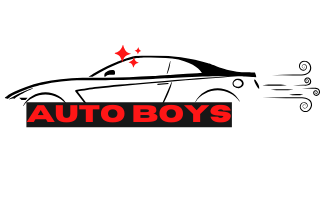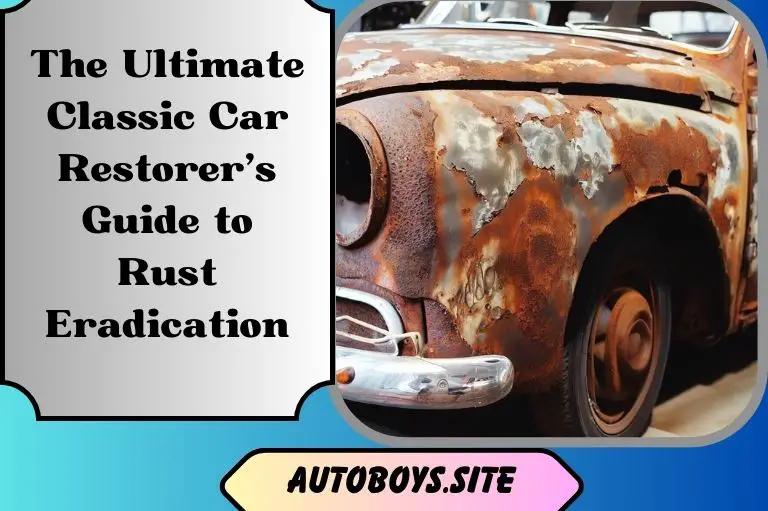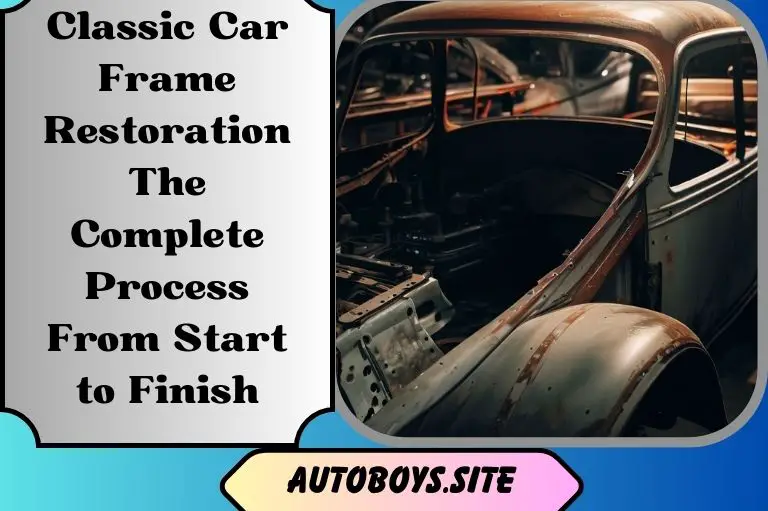Revive Your Pony: How to Restore a Classic Mustang
The rumble of a classic V8 engine, the smell of polished chrome and leather, the feel of the road beneath wide radial tires – for enthusiasts, nothing quite captures the thrill of muscle car ownership like a vintage Ford Mustang. If you’re ready to revive the power and beauty of an iconic American sports car, restoring a classic Mustang can be an incredibly rewarding endeavor.
However, bringing one of these ponies back to its former glory requires patience, skill, and a dedication to detail. This comprehensive guide will walk you through finding a salvageable Mustang, sourcing hard-to-find parts, and tackling everything from engine rebuilds to upholstery repair. With the right tools, knowledge, and passion for the open road, you’ll soon be cruising down memory lane in a fully restored American legend.
Finding the Right Classic Mustang to Restore
Finding the perfect Mustang to restore requires patience and diligence. The first step is determining your budget and the specific model year you want to restore. Early Mustangs like the 1965-1966 models tend to be more valuable, while later models from the 1970s may be more affordable. Once you have a budget and model year in mind, start checking local classifieds, eBay, and Mustang forums for candidates.
When you find a promising Mustang, inspect it thoroughly. Check the vehicle history and title to ensure there are no liens against it and that the mileage is accurate. Examine the body for any signs of rust or damage. Look for panels that may need replacement. Inspect the interior and check that all components are present.
Test drive the Mustang if possible. Listen for any strange noises from the engine or transmission. Check that the steering and brakes are responsive. After the test drive, inspect the engine bay. Look for any signs of fluid leaks or damage. Check that the VIN numbers on the chassis, engine, and body panels all match.
If everything checks out and the price is right, you’ve found your Mustang! Now the real work begins. Create a detailed restoration plan, source high-quality parts, and prepare to invest serious time and money in bringing your Mustang back to life. With passion and persistence, you’ll be cruising the open road in your fully restored American icon.
Sourcing Parts and Materials for Your Mustang Restoration Project
Sourcing high-quality parts for a Mustang restoration project is key to achieving an authentic restoration. Several reputable suppliers specialize in Mustang restoration parts.
Harris Mustang Supply
Harris Mustang Supply carries restoration parts for 1964 1⁄2 through 1973 Mustangs, as well as late-model Mustangs. They source parts from reputable manufacturers to ensure originality and fit. Harris Mustang Supply is a trusted source for sheet metal, trim, suspension, and drivetrain parts.
Texas Mustang
Texas Mustang has become the number one source for Mustang aftermarket parts. They carry parts for all Mustang models from 1964 to the present. Their selection includes sheet metal panels, trim pieces, upholstery, lighting, drivetrain parts, and more. Texas Mustang ships worldwide and provides great customer service.
DALLAS MUSTANG
DALLAS MUSTANG has a wide selection of restoration parts and accessories for all Mustangs from 1964 to the present. They carry sheet metal, trim, upholstery, lighting, and drivetrain parts to complete your Mustang restoration. DALLAS MUSTANG is known for quality parts and great prices.
Sourcing from reputable suppliers that specialize in Mustang restoration parts will ensure you get high-quality parts that fit properly and help achieve an accurate restoration. Comparing prices across suppliers can also help save money on your Mustang restoration project. With the right parts and patience, you’ll be cruising in your restored pony in no time.
Step-by-Step Guide to Restoring Your Vintage Mustang
To restore a classic Mustang, the first step is to evaluate the overall condition of the vehicle and identify areas that require restoration. Define your objectives, establish a budget, and make a detailed plan before starting the restoration process.
Stripping the Body
Paint removal is one of the first steps in the restoration process once the body is stripped to the bare metal. Media blasting, chemical dipping, or sanding/grinding are common methods for removing old paint and rust from the body panels and frame. Patch any holes or rust spots, then apply a rust-preventing primer to the bare metal.
Mechanical Overhaul
With the body stripped, now is the time to rebuild or replace major mechanical components like the engine, transmission, suspension, brakes, and wiring. Rebuild kits for many Mustang parts are available to overhaul your existing components or you can source replacement parts. Install any upgrades like a modern fuel injection system, disk brake conversion, or five-speed manual transmission.
Body Work
Once mechanical work is done, focus on repairing any dents or dings in the body panels. Apply body filler or replacement panels as needed. Get the panels as straight and smooth as possible before moving on to the painting process. Fit and align replacement trim, lights, bumpers, glass, and any other components.
Paint and Reassembly
With bodywork complete, disassemble the car into major sections (body, chassis, engine/transmission, interior) for painting. Apply 2-3 coats of primer followed by your choice of paint—factory-correct colors are popular for restorations. Carefully reassemble the entire vehicle, making sure to properly reconnect wiring, linkages, and lines.
A meticulous and well-planned restoration process will result in a Mustang that looks and drives like new. Take your time and do it right—your patience will pay off! With some hard work and dedication, you’ll be cruising the back roads in a fully restored American icon.
Tips to Make Your Mustang Restoration Project Go Smoothly
To make restoring a classic Mustang as smooth as possible, there are a few tips to keep in mind:
Do Your Research
Before diving into a Mustang restoration project, research the specific model year to determine the correct parts and common issues. Join Mustang forums and online groups to connect with others who have experience restoring the same model. Their knowledge can help avoid rookie mistakes and source hard-to-find parts.
Create a Realistic Budget
Restoring a classic car can be expensive. Create a thorough budget that includes the cost of parts, tools, and any professional services needed. Factor in additional expenses for unforeseen issues. Stick closely to the budget to avoid going overboard or running out of funds before the project is complete.
Focus on One Area at a Time
Don’t feel overwhelmed by the scope of work. Break the restoration into manageable chunks, like the engine, interior, exterior, etc. This makes the work seem less daunting and allows celebrating small wins along the way to stay motivated. Finish one area before moving on to the next.
Ask for Help When Needed
For complex tasks like engine rebuilds, upholstery work, or body repair, don’t hesitate to call in a professional. Their experience and skills can save time, money, and frustration in the long run. When handling parts of the restoration yourself, invite friends who share your enthusiasm for the project to pitch in. Many hands make light work.
Document the Process
Take photos and videos of the restoration process. Not only will this create lasting memories of the experience, but it also provides a useful reference guide for the future. The documentation can also add value for potential buyers if you eventually decide to sell the Mustang.
With patience and persistence, restoring a classic Mustang can be a rewarding endeavor. By following these tips, your pony will be galloping down the road again in no time.
The Rewards of Restoring a Classic Mustang
The rewards of restoring a classic Mustang are many. For the enthusiast, bringing a pony car back to showroom condition can be tremendously satisfying.
Increased Value
A fully restored Mustang, especially a rare model like the Shelby GT350 or Boss 302, can be worth significantly more than a non-restored example. Parts and labor are expensive, but the total cost of restoration may still be less than the increase in the vehicle’s value, making it a good investment.
Restoring a classic Mustang demonstrates a commitment to craftsmanship and an appreciation for automotive history. Fellow enthusiasts will admire the time, money, and work required to revive an iconic muscle car. A concours-level restoration, with every detail returned to factory-new condition, garners the most prestige but any well-done restoration still commands respect.
Reliability and Driveability
A restored Mustang not only looks better but drives better too. Replacing or rebuilding worn-out components like the engine, transmission, suspension, and brakes makes the vehicle far more dependable and enjoyable to drive. With modern parts and materials, a restored Mustang can provide a driving experience as good as or better than when the car was new while still retaining its classic character.
Legacy
Restoring and preserving a piece of automotive history allows future generations to experience the Mustang’s timeless design and spirited performance. Many see classic cars as works of art and cultural artifacts that should be protected. A Mustang returned to its former glory stands as a tribute to the engineers, designers, and workers who brought the original pony car to life more than 50 years ago.
Whether for investment, prestige, driveability, or legacy, restoring a classic Mustang rewards the owner with a unique connection to an automotive icon of the 1960s. The blood, sweat, and tears required to complete a restoration forge an irreplaceable bond between human and machine.
Conclusion
Restoring a classic Mustang is a labor of love that requires patience, skill, and dedication. But for the devoted Mustang aficionado, the result of cruising down the open road in a fully restored piece of automotive history is worth all the effort. By starting with a solid vehicle, tracking down high-quality parts, and paying meticulous attention to detail during the restoration process, you’ll be able to bring your Mustang back to showroom quality. Though it may seem like an impossible task, many Mustang owners have completed restorations. With time, money, and passion, you too can revive your pony.







